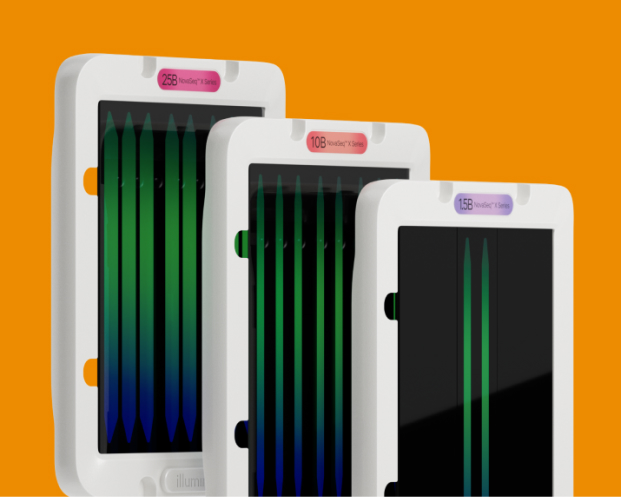The unmatched combination of production-scale throughput and cost enables deeper sequencing of larger sample cohorts. The NovaSeq X Plus system delivers up to 16 Tb of output, allowing sequencing of 128 human genomes at 30× coverage or 96 human genomes at 40× coverage per dual 25B flow cell run.
Illumina Complete Long Reads enables generation of both long- and short-reads on the same instrument for more scalable, comprehensive whole-genome sequencing.

